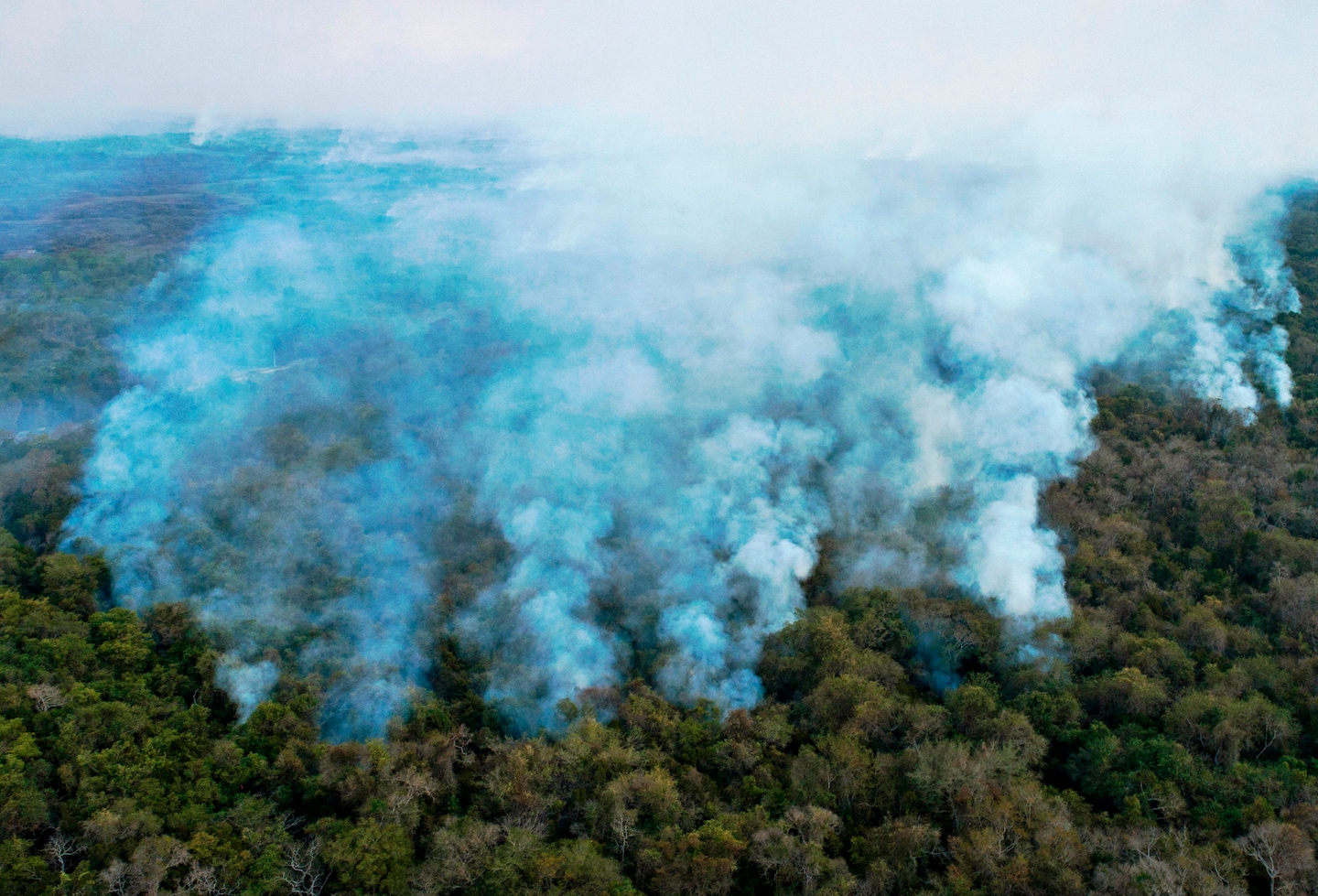Last year’s Amazon fires stirred international outrage. This year’s dry season has started out worse.

The Brazilian government is under mounting pressure to curb the fires, most of which are set by squatters, land invaders and speculators. International investors and Brazilian banks have demanded more action against rising deforestation. Activists inside and outside Brazil have called on Bolsonaro to fire Environment Minister Ricardo Salles, who has internally urged using the country’s devastating coronavirus outbreak as cover to weaken environmental protections.
In May, Bolsonaro dispatched the military to quell the deforestation, which has accelerated during the pandemic. Last month, he signed a decree banning fires for 120 days, or the expected length of the dry season.
But the right-wing populist has also publicly doubted the severity of the fires. And in an echo of his claims last year that they were the work of opponents trying to make him look bad, he blamed most of this year’s fires on indigenous peoples.
“It’s a lie out there,” he said during a Facebook Live session last month while recovering after contracting the coronavirus. “Our forest is humid. It doesn’t catch fire. It burns at the periphery. And the majority of them [are set by] the Indian” and other impoverished peoples.
The contradictory messaging and apparent failure by the military to slow the fires have further unsettled environmentalists and scientists already worried that this year’s spate of fires could be worse than those in years past.
Last year’s rise in deforestation littered the forest floor with thousands of tons of brush waiting to be burned. The weather this year has been drier. And the pandemic, which has infected more than 2.9 million Brazilians and killed more than 99,000, has so consumed the country that the ongoing destruction in the Amazon has yet to attract as much public interest.
“It could be disastrous,” said Jerônimo Sansevero, an environmental scientist at the Rural Federal University of Rio de Janeiro. “This can be a scenario that is very terrible.”
Over the past generation, large portions of the forest have been converted from dense canopy to a checkerboard of soy plantations and cattle ranches. But destroying one of the world’s most precious natural resources is not a simple task. It takes heavy construction equipment, many workers and lots of money. Criminal groups, land speculators and corrupt officials pump millions into the endeavor, hoping to “flip” the forest and cash in on their investment.
One of the most important tools in this transformation is fire. Vegetation is first cut down, then laid out to dry and then burned. Last year, deforestation rose to rates unseen in a decade. But scientists estimate that only around half of the felled wood was burned. More than 4,500 square kilometers, or 1.1 million acres, of it are still waiting, according to the Amazon Environmental Research Institute, a Brazilian think tank.
Criminal groups can’t afford to walk away without burning what they cut down, scientists say. “This is one and a half year’s worth of fuel that’s been chopped down and is waiting to be burned,” said Carlos Nobre, a leading Amazon researcher. “It is very likely that we are going to have more fires this year.”
The added destruction comes at a particularly critical juncture in the Amazon. After decades of explosive growth in deforestation, the Brazilian government brought it down to record lows in 2012. But it has since come back, as the broader economy crumbled and Bolsonaro promised to roll back environmental regulations and open up the forest for broad development.
Now scientists warn that the forest is lurching toward a tipping point, when deforestation will alter the forest’s ecology, turning large swaths into arid savanna. But rather than enlist the federal environmental agency IBAMA, which was widely credited with reducing deforestation, the Bolsonaro administration has hollowed out its ranks — and sent in the military to fill the gaps.
“This isn’t the function of the military,” said Ane Alencar, the director of science at the Amazon Environmental Research Institute. “You aren’t going to send IBAMA in to fight a war, because it doesn’t have the training. But it has the training for reducing deforestation.”
The pandemic has added uncertainty. Some government inspectors have been called home out of health concerns. Attention has been focused on the outbreak, the second worst in the world after the United States’. And now fires are beginning to spark in communities already in the grip of the coronavirus.
The governor of Rondônia has predicted the smoke will exacerbate coronavirus symptoms, leading to more deaths. Visits to medical clinics for respiratory issues often rise in Amazonian states during the burning season, and this “will make it worse,” he told the news outlet Amazon Network. “So it’s important that the fires don’t happen.”
“The city is covered by a cloud of soot,” said Rogério Leite, the secretary of health in the Mato Grosso city of Corumbá. “There isn’t any city that is 100 percent prepared to face two events of this nature, but we will do everything we can to protect the population.”
The coming weeks could be more difficult. August and September are when the most fires burn. In the first six days of August, at least 5,860 were set. That is ahead of last year’s pace.
Heloísa Traiano contributed to this report.






